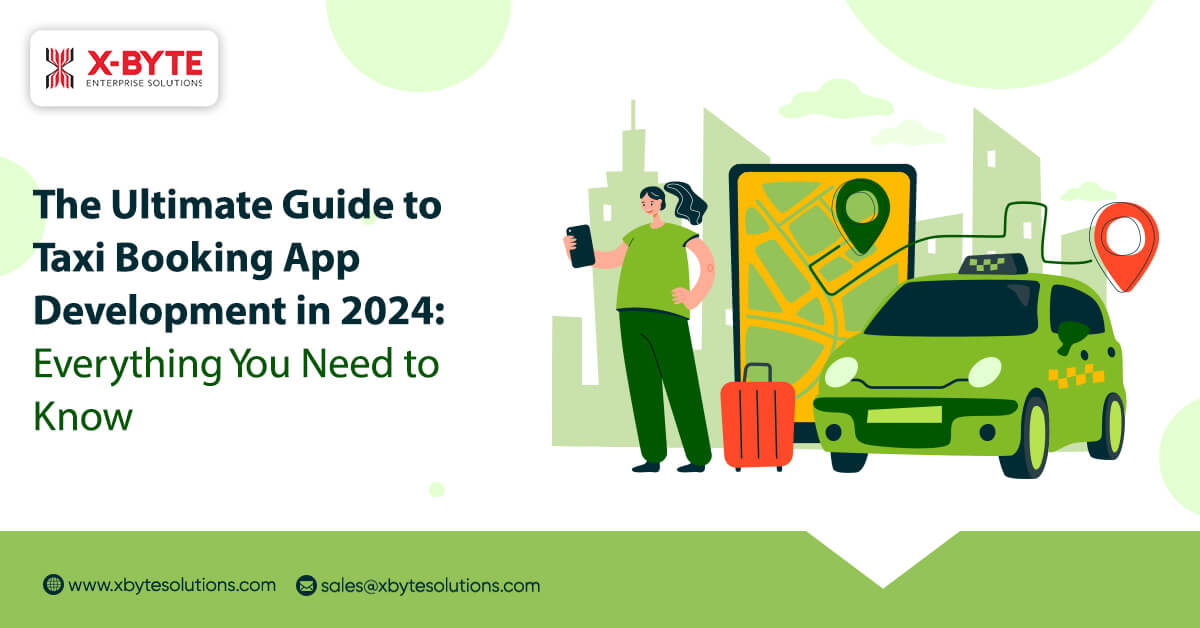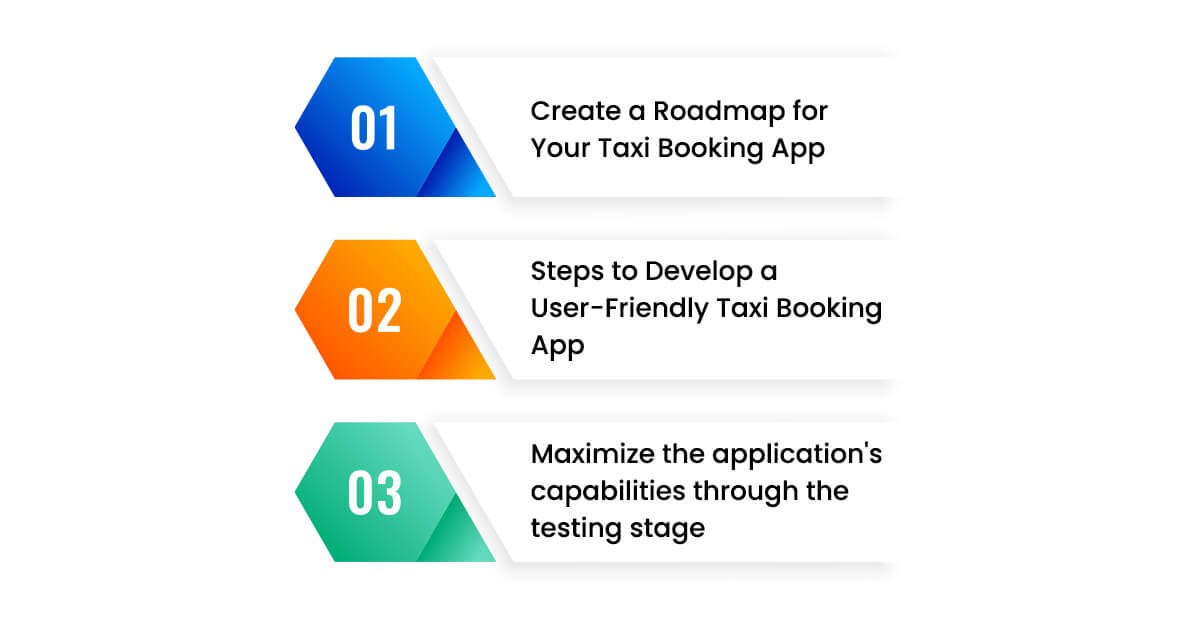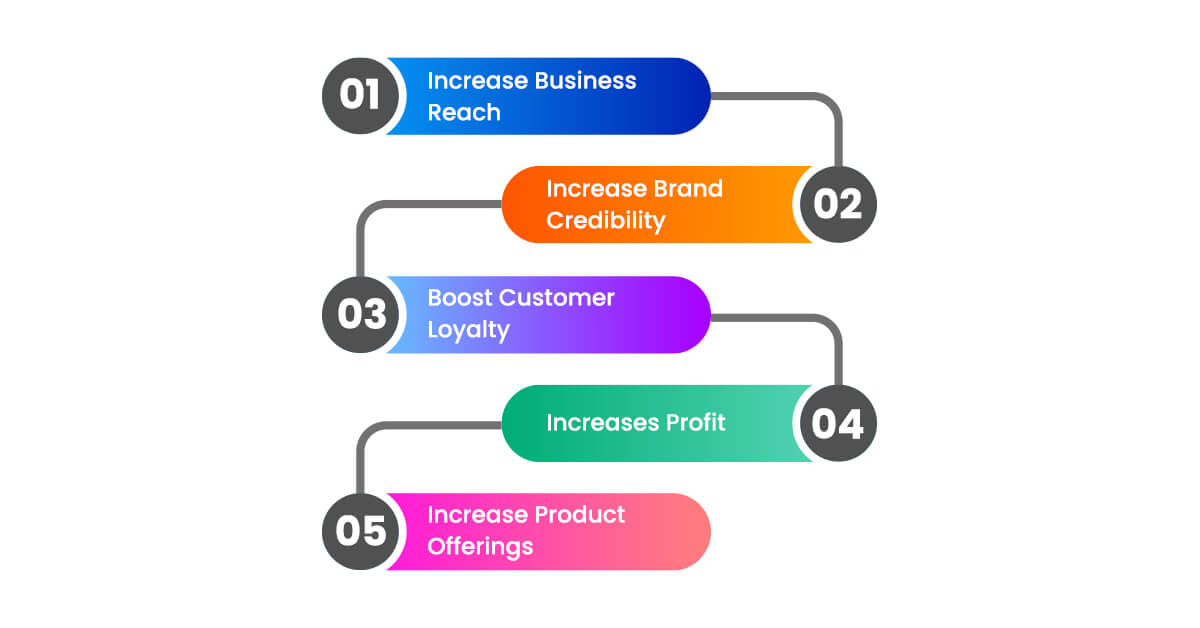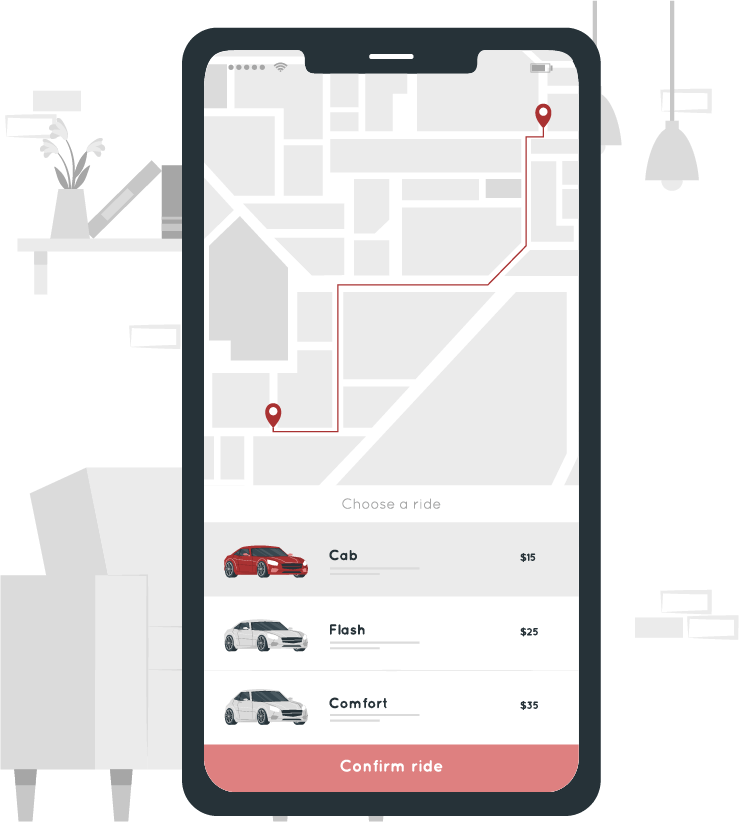
Quick Summary : Are you the one who always wanted a feature-rich taxi booking app development but lacking the expertise? It’s a time to explore steps, costs, and features to implement in taxi booking apps by employing the best etch stack. Understand every aspect with its benefits in this blog to stand out from the competition.
There is a growing need for taxi booking app development services due to the increased demand for on-demand services. It is undoubtedly challenging to wait for public transportation every day. Additionally, they need help to own a personal car. A cab is the best alternative for them to go to their location. However, individuals tend to use online applications when making cab reservations.
As technology has developed and more people have access to the internet, there has been a rise in the use of smartphone applications for many daily tasks. The need for applications that allow people to book taxis is growing as a result. An app is helpful to handle travel in the city without any hassles. Furthermore, a taxi booking app can help save money on maintenance, insurance, and parking.
Taxi booking software is an excellent tool that is utilized by a diverse variety of consumers all around the world. It has an appealing business module that follows regulations for taxi app startups to establish operations. This post will provide a comprehensive approach to creating a taxi booking app, including features, benefits, and other details. Check out this blog for all the details.
What is a Taxi Booking App?
A ride-booking app allows users to book a taxi using an internet connection and an app UI. You know there are two applications, the first for drivers and the second for passengers. Taxi booking apps such as Ola and Uber use the same interface, allowing customers to enjoy a simple ride-sharing experience.
In short, a taxi booking app is an on-demand application that allows you to book an instant trip online. This application is often meant to aid passengers in entering all details regarding the ride so that drivers can comprehend the drop location, ride type, and other factors.
Key Reasons to Build a Taxi Booking App for Your Business
The market for taxi booking applications has been growing for several years.
- In 2024, the taxi and ride-hailing market is expected to generate US$165.60 billion in revenues. The revenue is predicted to expand at an annual rate of 6.83% during the next four years, reaching CAGR 2024-2028.
- According to the research, the on-demand taxi booking app sector would rise rapidly. The expected value of taxi apps in 2026 is $150 billion.
- Uber, one of the most popular taxi ride-hailing applications, earned between $36.5 billion and $37.5 billion, compared to StreetAccount’s forecast of $36.5 billion and adjusted EBITDA of $1.18 to $1.24 billion.
- By 2026, the annual growth rate is estimated to be 5.03% (2023-2026), representing a market volume of around US$390,000 million.
- Not only that but the number of users in the industry is predicted to reach 1666 million by 2026, indicating a definite necessity for the growth of taxi booking app development.
- User penetration is now about 20% (2023), with a projected increase to 21.1% by 2026.
- If we evaluate these programs’ user base and utility, the average income per user is around US$205.92.
- The online ride-hailing and taxi categories would account for about 50% of overall income by 2026.
- These figures are only estimations. Actual outcomes may exceed them depending on new trends and scenarios the world might see in the next few years.
Develop Multi-Platform Taxi Booking App with Our Expertise
How to Develop a Taxi Booking App- Steps to Follow?

Every startup or business that wants to take their taxi service online will ask, “How do I create a taxi booking app?” Entrepreneurs often feel that creating and developing an app will be difficult due to a lack of technical skills. However, following a well-defined strategy may simplify developing taxi booking software.
Learning about the market comes first, followed by planning, producing, and deploying the app. Let’s understand step by step how to make a taxi app by leveraging the latest market trends:
Phase 1:
Create a Roadmap for Your Taxi Booking App
Planning is an essential phase in the on-demand taxi app development process. It involves creating a roadmap for what the app will look like and what specific goals you hope to achieve.
1. Recognize the Market and User Requirements
You must know that various market titans, such as Uber and Ola, have already acquired most clients. Many similar rivals have entered the online taxi market, resulting in intense rivalry. Furthermore, consumers have already received solutions to many of these difficulties.
Hence, how do you aim to differentiate from these competitors? What market gaps do you want to fill, and do you understand the specific consumer needs? Answering these questions is critical for developing a good mobile taxi booking application strategy.
2. Identify the Target Audience
Determine your target audience after you are aware of how the online taxi industry operates and what your role should be. Will it just be locals, or do you want to reach out to folks in other towns and states? Determining your target market will allow you to design an effective taxi booking app.
Some factors to keep in mind while identifying your target audience are:
- Analyse demographics
- Monitor user behavior
- Identify the pain spots
3. Select the Features to Create a Visually Appealing Application
Before you start designing your app, you should identify your audience and list the features you want to add. Begin by understanding your target audience’s wants and preferences. It will also allow you to design an app that meets their requirements and provides a smooth user experience.
After determining the target market, you need to decide which features to include in your app. Some crucial features to examine are:
| Features | Customer app | Admin app | Driver app |
|---|---|---|---|
| User Registration | ✓ | ✓ | ✓ |
| User profile management | ✓ | ✓ | |
| Real-time tracking | ✓ | ✓ | ✓ |
| Booking and scheduling | ✓ | ✓ | ✓ |
| Fare calculation | ✓ | ✓ | ✓ |
| Payment integration | ✓ | ✓ | ✓ |
| Ratings and reviews | ✓ | ✓ | ✓ |
| In-app messaging | ✓ | ✓ | ✓ |
| Push notifications | ✓ | ✓ | ✓ |
| Multi-language support | ✓ | ✓ | ✓ |
| Driver management | ✓ | ✓ | |
| Driver tracking | ✓ | ✓ | |
| Trip history | ✓ | ✓ | ✓ |
| Customer support | ✓ | ✓ | ✓ |
| Promo codes and discounts | ✓ | ✓ | |
| Ride sharing/pooling | ✓ | ||
| Heatmap analysis | ✓ | ||
| Reporting and analytics | ✓ |
4. Increase Income Using the Proper Monetization Approach
You’ve designed an appealing taxi booking software, but how will you generate money? You may select one or more app monetization options to improve ROI.
This includes:
Commission-based Approach:
Implementing a commission-based approach allows you to earn a percentage of the fare for each ride. The solution will allow the app to generate income directly from each transaction it enables.
Subscription model:
By selling subscription plans to consumers, you may provide extra perks such as lower tickets, priority booking, or access to more exclusive content. Users will pay a regular cost to retain their subscription.
Surge pricing:
This approach involves raising the service charge during peak hours, strong demand, and special events. As a result, you may generate more income by temporarily raising the price.
Phase 2:
Steps to Develop a User-Friendly Taxi Booking App
Once you’ve conducted market research, evaluated your rivals, identified your target audience, and outlined the app’s essential features, it’s time to start developing your taxi booking app. The following are some of the steps you should perform during the development process:
1. Create an App Design
The UI/UX is crucial for attracting clients and increasing retention rates. Start the app development process by generating a wireframe of the app’s interface. The design will help you stand out and get your target demographic’s recognition.
Here are some design rules you may follow:
- Creative and intuitive navigation.
- Simple CTA buttons.
- Consistent and adaptive layout
- Minimalist and clean design.
2. Develop the App’s Features
Developing the features and operations of the mobile app for booking taxis comes after the design has been completed. You may construct your app using a low-code or no-code platform or hire a specialized development team. The development process involves writing the necessary code and adding functionality such as user registration, ride booking, real-time tracking, fare computation, driver administration, ratings, and reviews.
Make an effort to create a stable and scalable design that will allow for future updates and growth. Furthermore, the correct taxi booking app development business will assist you in designing and developing the app according to your specifications.
3. Integrate Payment and Security Features
Users will be expected to make a payment after each ride; therefore, the method should be simple. Furthermore, the app should offer a variety of payment choices so that your clients may pay using the source they trust the most. Payment options include cash, debit cards, app wallets, and internet payments. This ensures that payments are never an issue.
Every on-demand taxi booking app must be safe since users will provide sensitive information such as their address, phone number, and other details. This stage is critical for building confidence and trust with your users while protecting their private information. As a result, the taxi booking app should ensure perfect security and privacy of users.
Fulfill your requirements for a Feature-rich Taxi Booking App
Phase 3:
Maximize the application's capabilities through the testing stage
Now is a perfect time to introduce potential users to your online taxi booking application. However, before introducing the application into the market, you must guarantee it works well and gives all the essential solutions.
1. Test the Application
After the development process is done, the on-demand taxi booking app will be tested. The testing procedure ensures that the program is free of bugs and errors. You may test the taxi booking app with a limited sample of users and solicit feedback for changes.
Here are a few suggestions for testing your taxi booking app:
- Test your cab booking app on a range of devices and operating systems.
- Test the taxi booking app with a diverse range of users, including those of various ages, skills, and backgrounds.
- Test the app in different places and under various situations.
- Monitor the app’s performance and hunt for faults or issues.
- Get user input on the app’s usability and design.
2. Launch the Application
Once you’ve tested your app and are satisfied with it, it’s time to publish it on the app stores. To achieve this, you must first register a developer account and then submit your app for evaluation. To do this, you must first register as a developer with each platform, follow their submission guidelines. You must also provide the necessary app data, such as descriptions, images, icons, and keywords. Customers can download your app when it has been evaluated and authorized.
3. Market the App
When it launches, you must implement a comprehensive marketing strategy to attract users to your taxi booking app. Use different avenues to promote and create awareness of your software. For example, social networking sites may be used to communicate with potential consumers, provide app updates, and conduct targeted advertising campaigns.
Use search engine optimization (SEO) tactics to boost the app’s visibility in search results. Paid advertising, such as targeted ads or app installation campaigns, can also help you reach a bigger audience. Collaborations with neighboring companies, influencers, or taxi service providers also help to increase brand recognition and app downloads.
Benefits of Developing a Taxi Booking App

Applications for booking taxis undoubtedly save time and provide an excellent travel experience. As a result, cab booking app development and ride-sharing industry trends are becoming increasingly popular. The taxi app development has various advantages. A few of the benefits are stated below:
Increase Business Reach
The primary advantage of developing a taxi booking app is that it helps automotive firms to expand their reach. It allows them to contact potential customers quickly. Today’s youth prefers to order cabs online using an app. According to the research, 60% of individuals utilize online taxi booking applications.
This large sum may aid a corporation in obtaining fresh clients. Consequently, developing mobile taxi booking software is the most effective approach to start your business and attract new consumers. It is a wise decision to invest in taxi app development.
However, because developing an app is difficult, you must look for a taxi app development firm dedicated to giving you the best solutions based on your specifications. Furthermore, they will guarantee you receive the best possible results within your budget.
Increase Brand Credibility
Brand awareness is critical for every organization, particularly startups. It is critical and has the potential to make or break your business. Their brand recognition has made people aware of their presence in the industry and the services they provide globally.
Furthermore, their decision to launch a cab app enables them to expand their business into additional cities and countries. You know that Uber’s annual revenue is between 11-12 billion. It is a wise decision to invest in taxi app development.
However, many individuals still have the same question: how to create a taxi application. If you have the same issue, you should look for a reputable taxi booking app development business or employ taxi app developers who are skilled and competent in this sector.
Boost Customer Loyalty
A positive brand image encourages customers to stay with a company longer. Additionally, the type of services they offer is the second most crucial component in building client loyalty. A consumer has a variety of expectations and needs from a company. To create successful connections with clients, businesses must identify their needs and give them solutions. Effective feedback systems, which may be installed in a taxi booking mobile application, can assist you in identifying such requirements.
Customers and drivers can share their experiences via feedback systems. This will let customers understand your company cares about their needs and interactions. Companies may turn regular visitors into prospective consumers by providing comprehensive app features. If you want to take advantage of this opportunity, consider investing in developing a cab booking app.
Increases Profit
Many cab drivers pay significant commissions to the aggregator’s software to handle the company successfully. Building your taxi booking software might help you save money on commissions.
This will help you save money while increasing your firm’s overall earnings. An in-house taxi booking app will significantly increase profit margins and expand your business enormously. If you want to create your own but don’t know how to create a taxi app, you need to contact skilled mobile app developers.
Increase Product Offerings
Without a doubt, every taxi company provides ride-sharing and taxi-booking services to their consumers regularly. They offer a more comprehensive range of products that might add value to your business. You may provide a few unique options with typical services, such as choosing their desired car, driver, etc. This will help you attract more consumers.

Request a Free Taxi Booking App Development Consultation
How Much Does it Cost to Build a Taxi Booking App?
| Factors | Description |
|---|---|
| App features | The level of complexity and the amount of features that need to be included in the app. |
| Design and user interface | Complexity of design and degree of customization. |
| Platform and device compatibility | Selection of operating systems (Android, iOS) and device support (tablet, smartphone, etc.). |
| Backend development | The difficulty of developing databases, APIs, server architecture, and third-party service integration. |
| Payment gateway integration | The number of accepted payment options. |
| Geolocation services | Combining geolocation and mapping services. |
| Multilingual support | Requirement for the app to support many languages. |
| Testing and quality assurance | The amount of testing necessary to guarantee the security, performance, and stability of an app. |
| App maintenance and support | The price of regular software upgrades, bug patches, and support services. |
| Development team | The decision of whether to hire an outside development team or stay in-house. |
Tech Stack for On-Demand Taxi Booking App Development
An in-depth technology stack for taxi app development comprising both frontend and backend components is required to develop taxi booking software. We use UX/UI best practices in ride-sharing apps to ensure a user-friendly experience. The following is a summary of the essential components and technologies often utilized in developing a taxi booking app:
| Component | Description |
|---|---|
| Frontend | The user interface of the app is displayed by the front end. It displays the app’s features and allows users to interact with them. The front end may be built with a variety of programming languages and frameworks, including React Native, Flutter, and Ionic. |
| Backend | The backend is the app’s server-side functionality. Its functions include data storage, request processing, and response generation. The backend may be built with a variety of computer languages and frameworks, including Node.js, Java, and Python. |
| Database | The database stores the app’s data, such as user profiles, ride histories, and payment information. The database might be relational (such as MySQL or PostgreSQL) or NoSQL (such as MongoDB or DynamoDB). |
| Geolocation | Geolocation is used to determine the location of users and drivers. It shows users nearby drivers and calculates the distance and time of a journey. Geolocation may be implemented utilizing a number of APIs, including Google Maps API and Apple Maps SDK. |
| Push notifications | Push notifications are used to provide messages to users, such as updates on impending rides or changes to their ride status. Push notifications may be implemented with a variety of APIs, including Apple Push Notification Service (APNS) and Google Cloud Messaging. |
| Payment processing | Payment processing is the method utilized to get paid by users for their rides. Numerous payment gateways, including PayPal and Stripe, may be used to execute payment processing. |
| Analytics | Data regarding user behavior on the app is gathered through analytics. The features and functionality of the app can be enhanced with the usage of this data. Analytics may be applied with a variety of technologies, such as Mixpanel or Google Analytics. |
Conclusion
Will you develop an app for taxi booking for your new or existing company? Transform your taxi service into an internet venture by using an interesting app to realize its full potential. X-Byte Solutions is aware of the difficulties you may encounter in a competitive marketplace and the necessity to maintain an advantage over your competitors. As a result, our taxi booking app developers are experts in creating strong, feature-rich, and user-friendly taxi booking applications that help streamline operations. The revenue models for ride-sharing startups or taxi-booking apps help businesses establish their operations smoothly.
We can assist you in developing an app that yields the intended outcomes with our on-demand delivery app development services.
